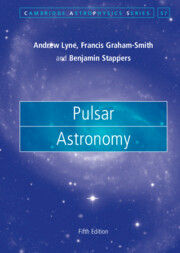Book contents
- Frontmatter
- Contents
- Preface
- Part I Discoveries and Techniques
- 1 The Discoveries
- 2 Telescope Techniques, Radio to TeV
- 3 Receiver Techniques and Data Analysis
- 4 Surveys and Population
- 5 Pulsar Timing
- 6 Timing and Astrometry of Binary Pulsars
- 7 The Distances of the Pulsars
- Part II Observed Physical Characteristics
- Part III Neutron Star Physics
- Part IV Environments and the Interstellar Medium
- References
- Index
2 - Telescope Techniques, Radio to TeV
from Part I - Discoveries and Techniques
Published online by Cambridge University Press: 21 July 2022
- Frontmatter
- Contents
- Preface
- Part I Discoveries and Techniques
- 1 The Discoveries
- 2 Telescope Techniques, Radio to TeV
- 3 Receiver Techniques and Data Analysis
- 4 Surveys and Population
- 5 Pulsar Timing
- 6 Timing and Astrometry of Binary Pulsars
- 7 The Distances of the Pulsars
- Part II Observed Physical Characteristics
- Part III Neutron Star Physics
- Part IV Environments and the Interstellar Medium
- References
- Index
Summary
Describes the diverse techniques used in telescopes for the very wide range of the electromagnetic spectrum covered by pulsar observations. Conventional telescopes for the visible range can be used with suitable high time resolution, while only the lowest energy x-rays can be focussed to form images. Higher x-ray and gamma-ray energies require individual photons to be detected and tracked. The highest energy gamma-rays are detected in Cerenkov air-shower arrays. In contrast to the photon detection of all high-energy radiation, radio telescopes and receivers treat radiation as waves with measurable amplitude and phase, allowing multiple beams to be formed in large phased arrays of radio telescopes.
- Type
- Chapter
- Information
- Pulsar Astronomy , pp. 24 - 33Publisher: Cambridge University PressPrint publication year: 2022

